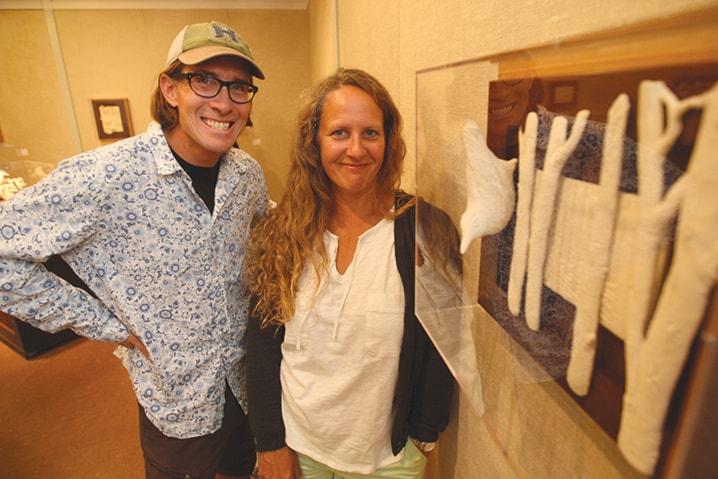In this hyper-kinetic age, two Red Deer artists are using stillness to try to capture children’s attention and help foster an appreciation of nature.
Dawn Detarando and Brian McArthur have created a series of bird friezes and sculptures in white porcelain as a travelling art/education exhibit commissioned by the Alberta Foundation for the Arts TREX program.
The crisp details and simplicity of the artworks capture various aspects of birds and their habitats. The display, which is only showing until Wednesday at Marjorie Wood Gallery in the Kerry Wood Nature Centre, sometimes offers viewers a whimsical look at avian life. But it also offers an underlying message about preservation.
The cameo-like works are reminiscent of the ancient marble art of Greece or Rome. But, unlike classical sculptures that were initially painted before they faded to white, Detarando and McArthur had no intention of using glazes or paints to capture colourful bird plumage.
“It would have obliterated the details,” said Detarando, who lives and works with McArthur in the Voyager Art and Tile Studio, just south of Red Deer.
“We think the (unpainted porcelain) brings a different aspect to it.”
McArthur likes the way light hits the whiteness, casting interesting shadows. “It really captures the detail of the carved feathers and eyes.”
The artists chose the hard medium because it allows them to carve in sharp relief, and also provides an interesting contrast. While birds are warm, soft and natural, the porcelain is cold and unyielding. The artists describe it as a “manufactured emblem of civilization.”
Viewers are led to observe shape, form and texture in dimensional detail in Bird Frieze: New Works in Porcelain — from the multitude of mountain ash berries depicted around cedar waxwings, to the protruding beaks and open mouths of a nest full of barn swallows.
Nearly all of the subjects depicted, including woodpeckers, nuthatches, ducks, chickadees, ravens, shrikes and a kingfisher, are regularly seen in the forest around the artists’ studio. “We have a great backyard and we often watch the birds,” said Detarando. “They are something we have a great appreciation for.”
The artist sees the feathered fliers as survivors that are constantly having to overcome challenges. “They have made so many adaptations and live in so many different types of environments,” said Detarando.
One of three sculptures in the display is called Eastern King Bird and its Clutch. It shows an adult bird perched on the blade of a chainsaw, while its chicks are in a nest on top of the chainsaw motor. McArthur, who once saw eastern king birds nesting on top of a drill pipe, said he intended this sculpture is a metaphor for habitat loss.
A frieze, Kitty a Serious Threat, alludes to millions of songbirds that die every year in the clutches of wandering cats.
Other works include a sculpture of the late local author and naturalist Kerry Wood, with a chickadee perching on his binoculars. In White-Breasted Nuthatch and Birch Trees, a bird and tree trunks extend out of the frieze and onto the wooden frame.
An educational component of the exhibit, which will travel around the province for the next two years (next stop is the Medicine Hat College campus in Brooks), asks viewers to match various adaptations of bills and bird feet.
There are also booklets and lesson plans for teachers who choose to use the display as a jumping off point for classroom projects and discussions.
Detarando believes children, as well as many adults, have been getting further removed from nature. And she feels this is a shame, since birds are our close neighbours.
“We don’t get to speak with each other, but we get to observe each other ... birds are captivating, maybe because they seem so free.”
lmichelin@www.reddeeradvocate.com
